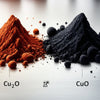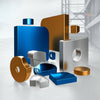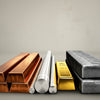Does Aluminium Conduct Electricity? Copper Tradeoffs, Solved
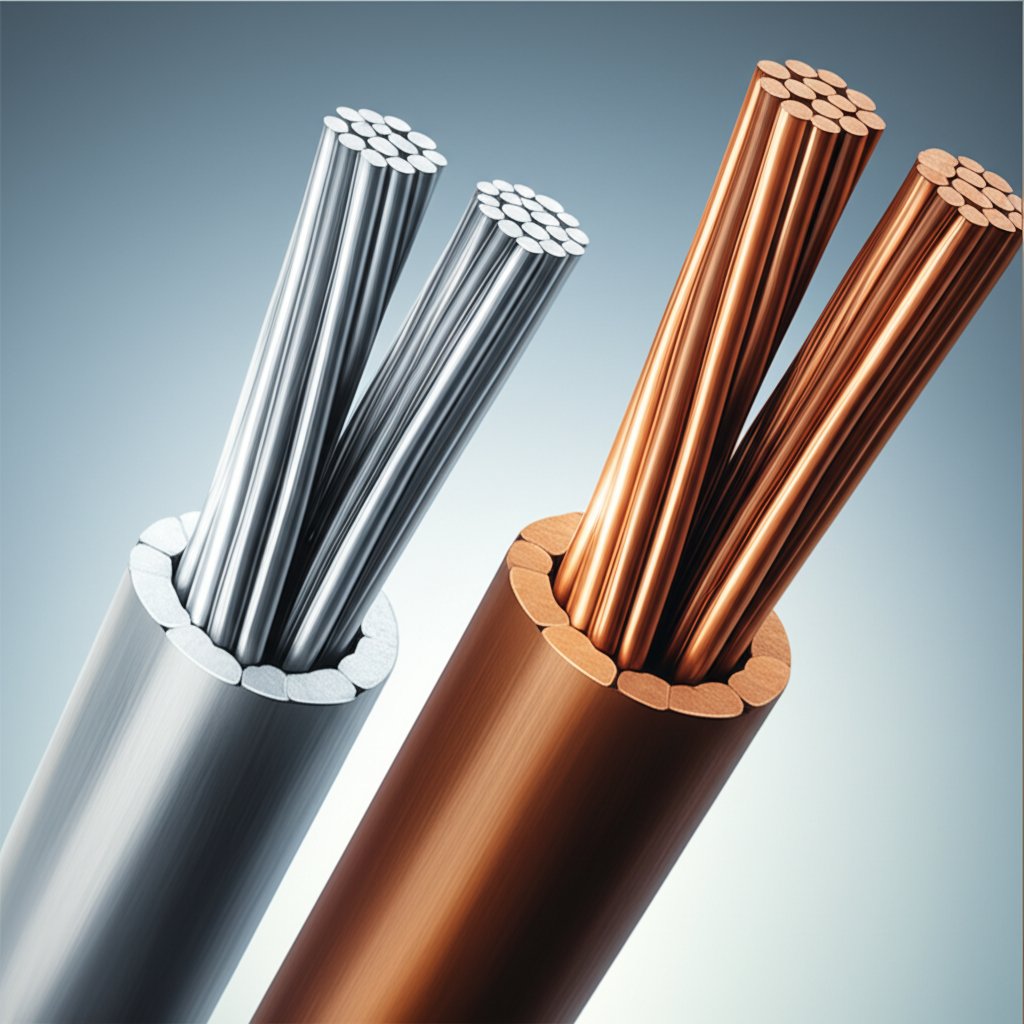
Aluminium as an Electrical Conductor Explained
Ever wondered, does aluminium conduct electricity? The answer is a clear yes—aluminium is a good conductor of electricity, thanks to its unique atomic structure. But what does it really mean for a material to conduct electricity, and why does aluminium make the cut? Let’s break it down in practical, everyday terms.
Why aluminium is a conductor
Aluminium, like most metals, is packed with atoms that each have electrons orbiting their cores. In metals, some of these electrons—called “free electrons”—aren’t tightly bound to any single atom. Instead, they float freely in what’s often called a “sea of electrons.” When you apply a voltage across a piece of aluminium, these free electrons move easily, carrying electric current from one end to the other. That’s why aluminium is a conductor, not an insulator. In fact, aluminium is widely used for electrical wiring and transmission lines because of this property.
Conductor meaning and how electrons move
So, what is a conductor in electricity? Simply put, a conductor is any material that allows electric charge—usually electrons—to move through it with little resistance. This flow of electrons is what we call electric current. In contrast, insulators don’t let electrons move freely, so they block current.
- Conductor: Allows electrons to move easily. Examples: aluminium, copper, silver
- Insulator: Blocks the flow of electrons. Examples: rubber, glass, plastic
When you flip a light switch, the current travels through metal wires (conductors) to power your bulb, but the plastic coating (insulator) keeps you safe by stopping electricity from escaping.
Common myths about aluminium and electricity
Some people wonder, "is aluminium a conductor or insulator?" or worry that aluminium’s surface might block current. Here’s the truth: while aluminium naturally forms a very thin oxide layer on its surface, this layer is so thin that it does not stop aluminium from conducting electricity in practical applications. The metal beneath remains highly conductive. In fact, even household aluminium foil conducts electricity, though not as efficiently as solid wire.
Another misconception is that aluminium must be extremely pure to conduct well. While purity does affect performance, even standard commercial aluminium is a good electrical conductor. The main takeaway? Aluminium is not as conductive as copper or silver, but it’s still among the best options for many electrical uses.
Aluminium is a good electrical conductor, though not the best.
To sum up: does aluminum conduct electricity? Absolutely. If you’re asking what is a conductor of electricity, aluminium is a textbook example—its free electrons move easily, making it ideal for carrying current in everything from power lines to electronics. In the next section, we’ll dig deeper into how aluminium’s conductivity compares to other metals and what that means for real-world projects.
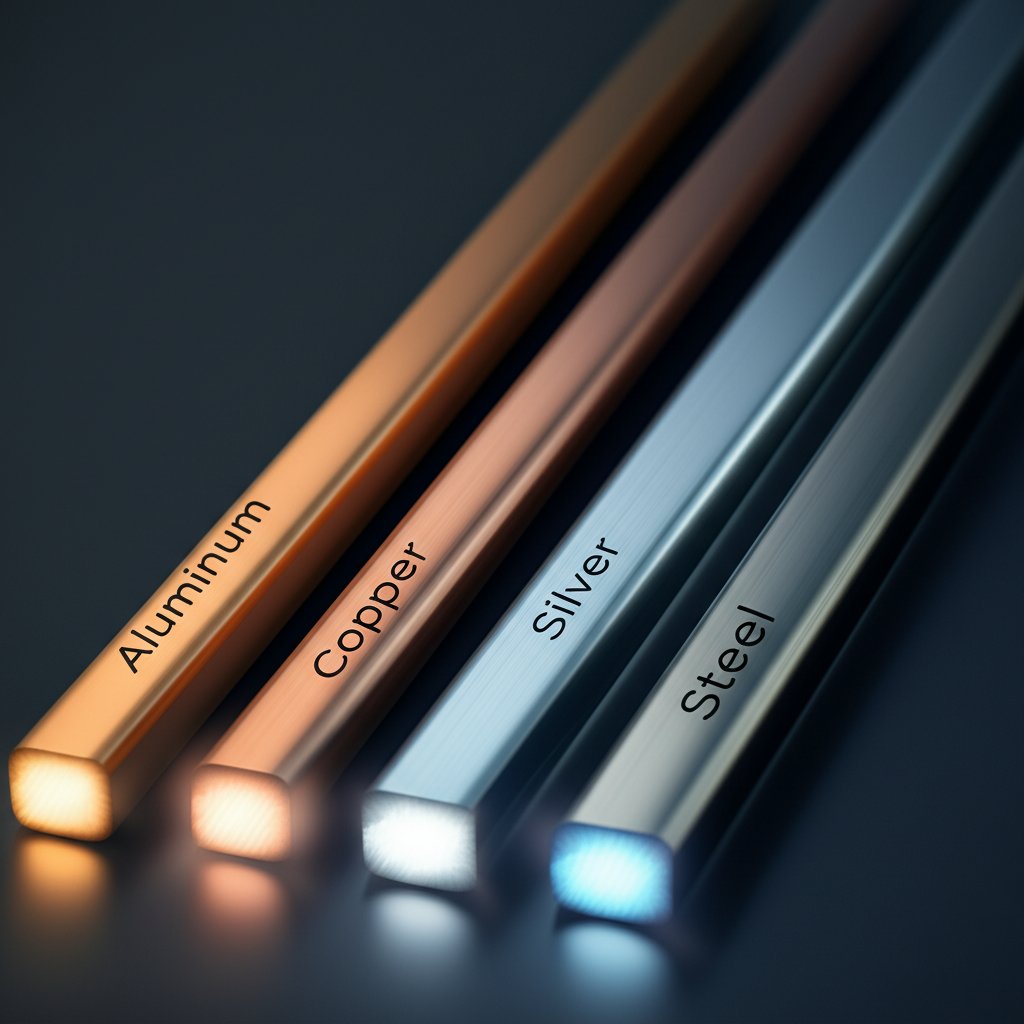
Electrical Properties You Can Quantify
When you ask, “how conductive is aluminum compared to other metals?” you’re really diving into the numbers behind why engineers choose one material over another. Let’s break down the essential electrical properties—conductivity and resistivity—and see how aluminium stacks up in the real world.
Conductivity and resistivity basics
First, what do these terms mean? Electrical conductivity tells you how easily a material lets electric current flow. It’s measured in Siemens per meter (S/m). The higher the number, the better the material is at carrying current. Resistivity is the opposite—it measures how much a material resists electric flow, in ohm-meters (Ω·m). So, a low resistivity means high conductivity, and vice versa. For engineers, these properties are critical when selecting materials for wires, cables, and connectors.
How %IACS benchmarks aluminium
To make comparisons easier, the electrical industry uses the International Annealed Copper Standard (%IACS). Pure copper is set as the benchmark at 100% IACS, and other metals are rated as a percentage of copper’s conductivity. For example, if a metal has 60% IACS, it conducts 60% as well as copper. Aluminium’s %IACS value is often used in electrical conductivity of metals tables to guide material selection for projects where weight, cost, or performance matter.
| Metal | Conductivity (S/m) | Resistivity (Ω·m) | % IACS | Density (g/cm³) | Notes |
|---|---|---|---|---|---|
| Silver | ~62 × 106 | ~1.6 × 10-8 | 106 | 10.5 | Highest electrical conductivity, rarely used due to cost |
| Copper | 58.7 × 106 | 1.7 × 10-8 | 100 | 8.96 | Standard for electrical wiring |
| Aluminium | 3.5 × 10⁷ | 2.82 × 10⁻⁸ | 61 | 2.7 | Much lighter than copper, common in power lines |
| Steel | 1.5 - 6.9 × 10⁶ | 15 - 65 × 10⁻⁸ | 3-12 | 7.8 | Performance varies greatly depending on alloy composition; often used to increase strength |
This table shows why aluminium is a go-to for large-scale electrical projects: its aluminium conductivity is about 61% that of copper, but its density is less than one-third. In weight-sensitive designs—think overhead power lines or aircraft—this tradeoff is a major advantage.
Temperature effects on aluminium conductivity
Here’s something you might not expect: as temperature rises, the aluminum electrical resistivity increases, which means conductivity drops. This happens because atoms vibrate more with heat, making it harder for electrons to move. So, wires carrying high current can get warmer and lose some efficiency. Engineers account for this by using ampacity tables and considering installation environments. When precise sizing matters, always consult authoritative resources for electrical resistivity of aluminum and ampacity ratings.
- Tip: Always check the temperature rating and installation conditions when selecting aluminium conductors for your project.
- For applications where heat buildup is a concern, oversizing conductors or improving ventilation may be necessary.
In summary, aluminum electrical conductivity is high enough for most power and wiring needs, especially where weight and cost are priorities. Its resistivity is higher than copper, but the lower density of aluminium enables larger cross-sections without excessive weight. Next, let’s see how these properties play out when comparing aluminium and copper side by side in real engineering projects.
Aluminium Versus Copper in Real Projects
When it comes to choosing between aluminum vs copper wire for electrical work, you’ll notice that both materials have unique strengths—and some key tradeoffs. Let’s break down how these two metals compare in real engineering projects, so you can make informed decisions whether you’re designing an overhead power line or wiring a building.
Aluminum vs Copper for Wiring
Why do some projects specify copper, while others use aluminium? It comes down to a balance of conductivity, weight, cost, and installation requirements. Copper has long been the gold standard for wiring because of its high electrical conductivity and durability. In fact, copper is rated at 100% IACS (International Annealed Copper Standard), making it the benchmark for all other metals. Aluminium, on the other hand, offers about 61% of copper’s conductivity, but weighs just 30% as much. This means that for the same electrical resistance, an aluminium conductor will be roughly half the weight of a copper one.
| Property | Copper | Aluminium |
|---|---|---|
| Electrical Conductivity | 100% IACS (benchmark); excellent | 61% IACS; good, but lower than copper |
| Mass for Equivalent Ampacity | Heavier (65 lb/1,000 ft for 8 AWG) | Lighter (39 lb/1,000 ft for 6 AWG—needed for same ampacity) |
| Cost Dynamics | More expensive per unit weight and length | More cost-effective, especially for large-scale projects |
| Jointing/Termination Requirements | Easy to solder and terminate; standard lugs | Requires special lugs/antioxidant compound; more sensitive to connection quality |
| Corrosion Risks | Resistant, but can tarnish; less prone to problematic oxide layers | Forms oxide layer that increases contact resistance; must be managed at terminations |
| Typical Use Cases | Building wiring, electronics, tight spaces, terminations | Overhead transmission lines, large cables, weight-sensitive applications |
When comparing aluminum vs copper conductivity, copper clearly leads. But in real-world projects, the decision often comes down to more than just conductivity. For example, in overhead power lines, the lighter weight of aluminium allows for longer spans and less structural support, making it the preferred choice for utilities (The Aluminum Association).
Where Aluminium Makes Sense
Imagine you’re designing a high-voltage transmission line. Weight is a critical factor because every extra pound adds cost and complexity to towers and supports. Here, aluminium wires vs copper wires offer a significant advantage: aluminium’s low density means you can use thicker wires for the same weight, offsetting its lower conductivity. That’s why aluminium dominates in power distribution and utility grids. In large buildings or industrial settings, aluminium vs copper cable can offer substantial cost savings, especially for long cable runs.
- Aluminium is preferred for: Overhead transmission lines, utility-scale power cables, and any application where weight and cost are priorities.
- Copper is preferred for: Building wiring, electronics, and places where compact size, high durability, or easy soldering are needed.
In short, copper vs aluminium conductivity is not the only deciding factor—installation environment and project goals matter just as much.
Standards and Code Considerations
Both aluminium and copper conductors must meet stringent industry standards. For copper, ASTM B3 covers annealed wire, while aluminium conductors—especially for building wiring—must use AA-8000 series alloys as specified by NEC Article 310. Connectors should be rated for the correct metal (look for markings like AL7CU for dual-rated lugs). Proper torqueing, antioxidant compounds, and regular inspection are essential for reliable aluminium terminations.
When sizing or installing conductors, always reference the latest codes (NEC, IEC, IEEE, or NFPA) and manufacturer instructions. Safety and performance depend on following these guidelines, especially because aluminium is more sensitive to connection quality and installation technique.
While copper is a good conductor of electricity and often the first choice for demanding applications, aluminium’s low weight and cost make it a smart solution for many large-scale and weight-sensitive projects—if installed correctly and to code.
Next, we’ll look at how to select the right aluminium alloys for electrical use and why design for manufacturability matters in prototyping and production.

Choosing Conductive Aluminium Alloys With DFM Support
When you’re designing an electrical project, selecting the right aluminium alloy can feel daunting. Should you go for the highest conductivity, or is mechanical strength more important? Let’s break down how to choose the best aluminum alloy for electrical conductivity—and why prototyping with DFM (Design for Manufacturability) guidance is a smart move.
Which Aluminium Alloys Conduct Best?
Not all aluminium alloys conduct electricity equally. If your top priority is electrical performance, you’ll want to look at the 1XXX series—these are commercially pure aluminium grades, like 1050, 1100, or 1350. These alloys are the go-to choice for aluminium conductors in power grids, bus bars, and heat exchangers because they offer the highest conductivity, typically around 59–61% IACS (International Annealed Copper Standard). For example, 1350 aluminium is widely used in overhead transmission lines thanks to its excellent balance of conductivity and corrosion resistance.
| Alloy Series | Example Alloys | Conductivity (% IACS) | Strength | Typical Use Cases |
|---|---|---|---|---|
| 1XXX (Pure) | 1050, 1100, 1350 | 59–61 | Low | Electrical wiring, bus bars, heat sinks |
| 6XXX (Mg-Si) | 6061, 6063 | 40–45 | Moderate | Heat sinks, LED frames, electrical enclosures |
| 8XXX | 8011, 8006 | Good (varies) | Moderate | Building wiring, foil, transformer windings |
| 7XXX (Zn) | 7075 | 30–38 | High | Aerospace, sports equipment |
As the table shows, conductive aluminum comes in many forms. If you need maximum current-carrying ability, stick with the pure grades. But what if your part also needs to handle stress or resist deformation?
Strength vs Conductivity Tradeoffs
Imagine you’re building a bus bar that needs to support its own weight and withstand vibration. Pure aluminium offers top-notch conductivity but is relatively soft. That’s where alloys like 6061 or 6063 (from the 6XXX series) come in. They deliver a solid balance: moderate-to-high aluminium electrical conductivity (up to 55% IACS) with much better strength and machinability. These are ideal for enclosures, heat sinks, or frames where both electrical and structural performance matter.
On the flip side, high-strength alloys like 7075 prioritize mechanical properties over conductivity. These are used in aerospace and high-stress parts, but their lower conductivity (as low as 30% IACS) makes them less suitable for main current-carrying paths. Always weigh the tradeoff: the more alloying elements added for strength, the more electron flow is disrupted, reducing conductivity.
- Key selection criteria for aluminum as a conductor:
- Conductivity target (IACS % or application requirement)
- Strength and stiffness needs
- Form factor (wire, bus bar, machined part)
- Surface finishing or coating (anodizing, paint, etc.)
- Joining and termination method
Prototype to Production With DFM
Sounds complex? That’s where prototyping and DFM support come in. Before committing to a full production run, it’s wise to prototype your aluminum electrical conductor using the intended alloy and finishing process. This lets you test both electrical and mechanical performance in real conditions.
Working with a partner who offers rapid prototyping and expert DFM feedback can help you avoid costly mistakes. For example, XTJ’s rapid prototyping services let you test designs in alloys like 6061 or 7075, and their engineers provide complimentary DFM advice to ensure your part is both conductive and manufacturable. Whether you need CNC machining, die casting, or injection molding, you can balance conductivity, strength, and cost before scaling up.
- Need a prototype for aluminium conductors? Consider:
- XTJ – Fast turnaround, wide alloy selection (including 6061/7075), DFM feedback, ISO 9001:2015 quality
By prototyping early and leveraging DFM, you’ll confidently choose the right aluminum as a conductor—and avoid surprises when your design moves to production. Next, we’ll look at how surface treatments and joint design affect real-world performance of aluminium in electrical systems.
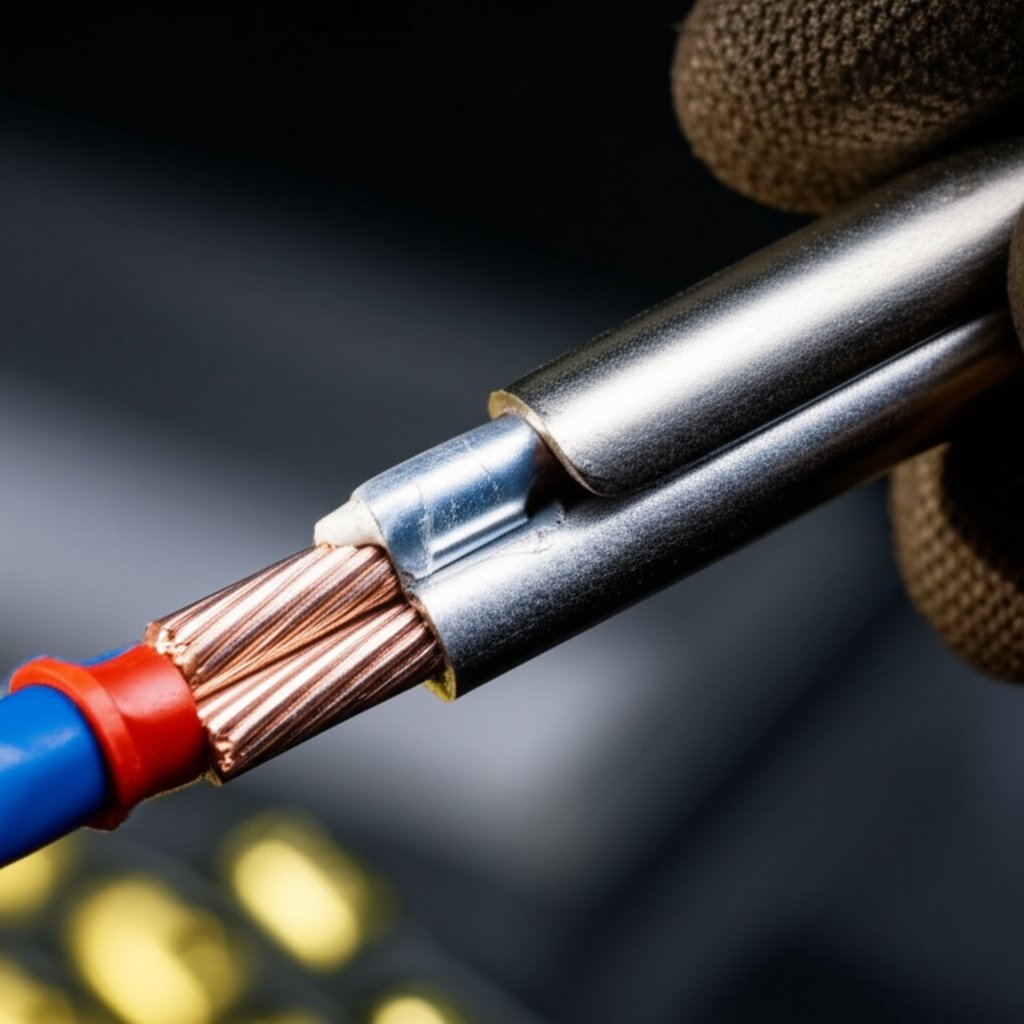
Mastering Terminations and Contact Resistance
When working with aluminum conductors, you might wonder: if aluminum is conductive to electricity, why do some connections fail or heat up? The answer often lies not in the metal itself, but in what happens at its surface. Let’s explore how aluminium’s native oxide layer affects connections, and what you can do to ensure safe, low-resistance joints every time.
Aluminium Oxide and Contact Resistance
Imagine stripping an aluminum wire—within moments, a thin, invisible layer of aluminum oxide (alumina) forms on its surface. This is a natural process: alumina is highly stable, protects the underlying metal from further corrosion, and forms instantly on exposure to air. But here’s the catch: is aluminum oxide conductive? Not really. Both is aluminium oxide conductive and alumina electrical conductivity are extremely low—alumina is considered an electrical insulator. In practice, this means the oxide layer can increase the contact resistance where two conductors meet, making it harder for current to flow across joints (Mathematical Modelling of Weld Phenomena 12).
Why does this matter for aluminum conductors? If the oxide layer isn’t properly managed, it can lead to overheating, voltage drop, or even arcing at the connection. The underlying aluminum is a good conductor, but the oxide is not—so reliable terminations require careful preparation and compatible hardware.
Making Reliable Joints with Aluminium
Sounds complex? It doesn’t have to be. Whether you’re terminating a branch circuit or connecting a heavy-duty feeder, following proven steps ensures low-resistance, long-lasting connections for conductor aluminum applications. Here’s a practical checklist you can use for every aluminum termination:
- Abrade and clean contact surfaces: Use a wire brush or suitable tool to remove the oxide layer and expose fresh aluminum just before assembly.
- Apply approved anti-oxidant compound: Coat the cleaned surface with a joint compound designed for aluminum conductors. This slows re-formation of the oxide and fills microscopic gaps.
- Use aluminium-rated or bi-metallic lugs: Only use connectors listed for aluminum (marked AL/CU, AL7CU, or AL9CU). These are designed to maintain a strong, stable connection.
- Tighten fasteners to manufacturer specification: Use a calibrated torque wrench or tool. Proper torque is vital—too loose and resistance rises; too tight and you risk damaging the conductor.
- Re-torque checks per maintenance schedule: Over time, connections can loosen from thermal cycling. Periodic inspection and re-torquing help sustain low resistance.
- Protect from galvanic corrosion: In wet or marine environments, use compatible materials and sealants to prevent corrosion where aluminum meets other metals.
Poor terminations—not the metal itself—are the leading cause of aluminum conductor failures in the field.
Inspection, Maintenance, and Safety
How can you be sure your aluminum terminations remain safe and effective? Regular inspection is key. Here’s what to look for:
- Check that all devices and connectors are rated for use with aluminum conductors (look for AL/CU or CO/ALR markings).
- Verify the presence of anti-oxidant compound where recommended—lack of it isn’t always a defect, but it’s good practice if specified by the equipment or code (Aluminum Conductor Checklist).
- Look for signs of overheating: discoloration, melted insulation, or loose hardware are red flags.
- Follow manufacturer and code instructions for all terminations. The National Electrical Code and NECA/AA 104-2012 provide detailed guidance for aluminum conductors.
Remember, aluminum oxide thermal conductivity is high, but its electrical conductivity is not—so it’s crucial to break through the oxide layer for every connection. With the right preparation, hardware, and maintenance, is aluminum conductive to electricity? Absolutely, and safely so.
Next, we’ll explore how alternating current (AC) effects like skin effect and frequency can further influence the performance of aluminum conductors in real-world power systems.
AC Effects That Change Real-World Performance
When you think about aluminum conductor performance, it’s easy to focus on the basics—wire size, ampacity, and cost. But what happens when alternating current (AC) comes into play, especially at higher frequencies or in large power systems? You’ll notice that some wires get warmer, and sometimes, even thick conductors underperform. The reason lies in AC-specific phenomena like skin effect and proximity effect—two factors that can change how efficiently aluminum (and other metals) carry current.
Skin Effect and Aluminium Conductors
Sounds technical? Imagine water flowing through a pipe. With direct current (DC), the entire cross-section of the pipe is used. But with AC, especially as frequency rises, current crowds toward the outer surface of the conductor—the so-called “skin.” This is known as the skin effect, and it’s not just a theoretical concept. In practice, the higher the frequency, the thinner the layer that actually conducts most of the current. The rest of the metal, deeper inside, carries much less current.
For aluminum conductivity, this means that as frequency increases, the effective area available for current flow shrinks, so resistance goes up. This effect is less pronounced at standard power frequencies (50/60 Hz), but becomes important for thick conductors, high currents, or higher-frequency applications. According to Wikipedia’s skin effect article, the AC resistance of a large-diameter wire can be much higher than its DC resistance, because only a thin “skin” near the surface is carrying most of the current.
- At higher frequencies, current flows mostly near the surface of the aluminum conductor.
- Effective resistance increases, leading to more heat and losses.
- Skin effect is proportional to the square root of frequency and the material’s resistivity; better conductors have a thinner skin depth.
Frequency, Heat, and Efficiency
When aluminum power cables are used in AC systems, especially at high frequencies (like in radio, data centers, or specialized industrial equipment), skin effect can’t be ignored. But there’s another player: proximity effect. When multiple conductors are close together (think bundled wires or bus bars), their magnetic fields interact, further distorting the current distribution and increasing resistance.
What does this mean for efficiency? More resistance means more heat. If you’re running high currents or using thick bars, you’ll notice that losses can add up quickly. That’s why engineers often use stranded, compacted, or specially shaped conductors (like litz wire) to counteract these effects. By breaking a large conductor into many smaller strands—each insulated from the others—current can flow more evenly, reducing both skin and proximity effects.
- Higher frequency pushes current toward the surface, increasing effective resistance.
- Stranded, compacted, or shaped conductors can help mitigate AC losses.
- Bus bar thickness and stacking matter: thinner, wider bars dissipate heat better and minimize losses.
- Aluminum’s lower density makes it practical to use larger cross-sections—helpful in conduct metal designs for overhead lines.
Implications for Bus Bars and Overhead Lines
Imagine you’re designing a substation or a high-voltage transmission line. For DC, you’d simply size the bus bar or wire for the expected current. But with AC, especially above standard power frequencies, you also have to consider how geometry and frequency will affect resistance and heat rise.
For aluminum bus bars, using wide, thin shapes (instead of thick, square ones) helps keep current distributed across more surface area—minimizing skin effect and keeping temperatures down. In overhead lines, aluminum’s light weight and good conductivity allow for large-diameter conductors that maintain efficiency even as skin effect grows with frequency (MetalStudy).
- Bus bar design: wide, thin bars outperform thick, square ones at AC.
- Overhead aluminum conductors: large diameters offset increased resistance from skin effect.
- For high-frequency or high-current applications, always consult design guides and standards for optimal conductor shape and size.
At higher frequencies, geometry can matter as much as material.
To sum up, while aluminum conductivity vs copper is a key factor in conductor selection, AC effects like skin and proximity effect can tip the balance in real-world applications. Smart design—choosing the right shape, strand count, and installation method—ensures your aluminum conductor delivers reliable aluminum power without excessive losses or overheating. Next, we’ll show you how to size aluminum conductors when converting from copper, so your system stays safe and efficient.
Sizing Aluminium Conductors From Copper Requirements
When you’re planning an electrical installation, you might ask: if copper is the standard, how do you safely switch to aluminium? After all, is aluminum a conductor of electricity? Absolutely—but it’s not a one-to-one swap. Let’s walk through a practical, code-compliant method to size aluminium conductors when converting from copper, so your system stays safe, efficient, and fully up to code.
How to Size Aluminium from a Copper Spec
Imagine you have a wiring plan calling for a specific size of copper conductor. Can aluminium conduct electricity just as well? Yes, but because aluminum resistivity is higher, you’ll need a larger cross-sectional area of aluminium to carry the same current. Here’s a step-by-step workflow you can use for any project:
- Identify the copper conductor’s specification: Note the wire size (AWG or mm²), insulation type, temperature rating, and installation environment.
- Reference authoritative ampacity tables: Use the NEC 310.15(B)(16) ampacity charts or equivalent to find the ampacity (current-carrying capacity) of both copper and aluminium conductors under the same conditions.
- Adjust for temperature and installation: Consider the temperature rating of the insulation (for example, 60°C, 75°C, or 90°C) and any derating factors due to grouping, ambient temperature, or conduit fill.
- Select the aluminium conductor size: Find the aluminium wire size that meets or exceeds the required ampacity. Because aluminium is less conductive, the size will typically be larger than copper for the same load.
- Check voltage drop: Aluminium’s higher resistivity means voltage drop can be greater over long distances. Use published tables or calculators to ensure voltage drop stays within acceptable limits (typically 3% for branch circuits).
- Verify termination compatibility: Make sure lugs, connectors, and devices are rated for aluminium. Confirm manufacturer torque specs and apply anti-oxidant compound if required.
- Document and inspect: Record all specs, installation details, and torque values. Plan for periodic inspections to ensure connections remain tight and corrosion-free.
Ampacity, Temperature, and Installation Conditions
Why all this detail? Because ampacity—the safe current a conductor can carry—depends not just on the metal, but on how it’s installed. Is aluminum a conductor or insulator? It’s a conductor, but its ampacity is lower than copper’s for the same size. Factors like insulation type, bundle size, and ambient temperature all influence the final choice. Always use up-to-date ampacity tables and follow local electrical codes.
- For example, a #4 AWG copper wire might handle 85 amps at 75°C, while the equivalent aluminium conductor would need to be #2 AWG for the same ampacity.
- Grouping multiple conductors together? Apply derating factors as required by code.
Worked Example: Copper to Aluminium Conversion
Let’s say your design specifies a 100-amp feeder using copper wire. How do you size the aluminium equivalent?
- Find the copper ampacity: #3 AWG copper at 75°C is rated for 100 amps (check your ampacity chart).
- Find the aluminium size with similar ampacity: #1 AWG aluminium at 75°C is typically rated for 100 amps.
- Check voltage drop: If the run is long, use voltage drop charts to ensure #1 AWG aluminium keeps the drop under 3% for your load and distance (IJDC).
- Verify connectors and torque: Use only lugs and breakers rated for aluminium, and tighten to the specified torque.
This method ensures that you’re not just swapping metals, but maintaining both safety and performance. Remember, what is a good conductor of electricity? Copper leads, but aluminium is a close second for large-scale, cost-effective wiring—if sized and installed correctly.
In summary, when converting from copper to aluminium, always size up, check voltage drop, and follow code and manufacturer guidelines. Next, we’ll look at safe practices for DIYers and where aluminium’s conductivity can—and can’t—be relied on in household projects.
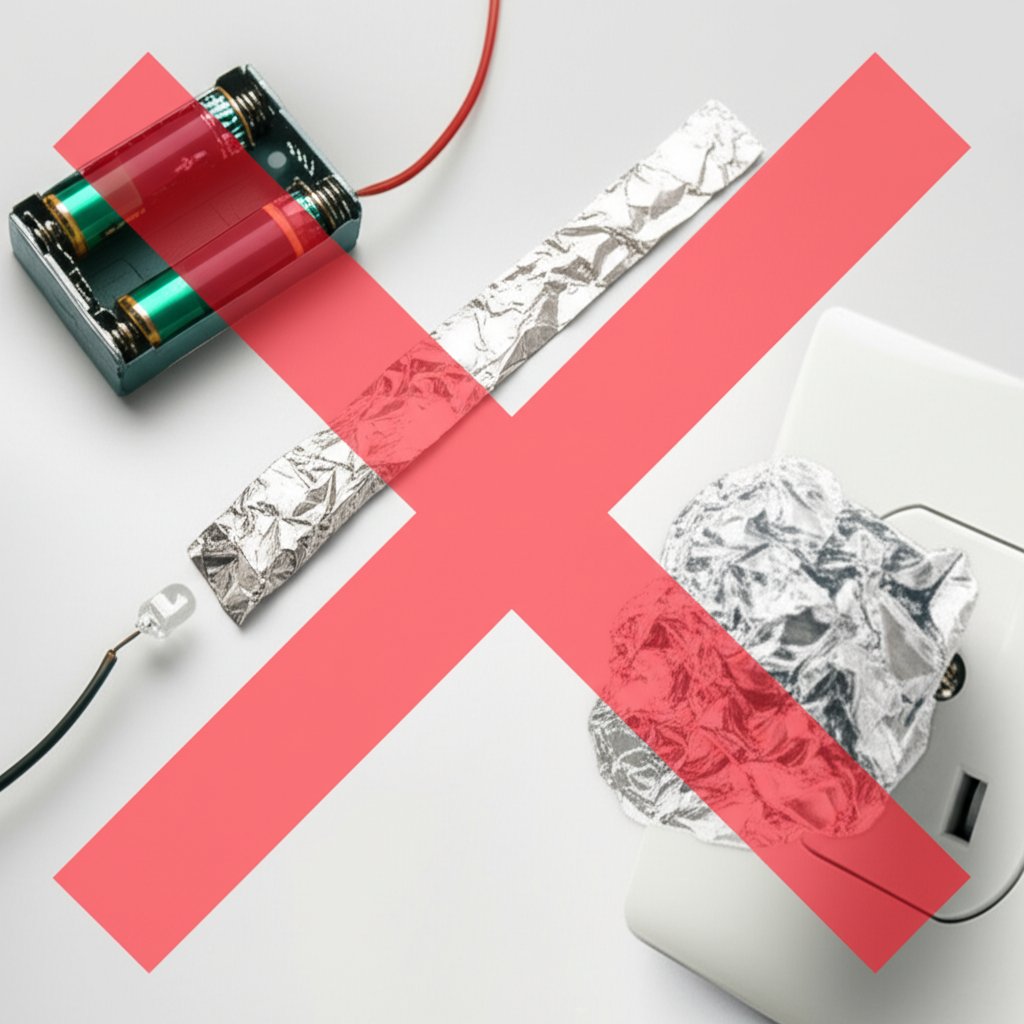
Safe Uses and Limits for Aluminium in DIY
Is Aluminium Foil a Safe Conductor?
Ever wondered, does aluminium foil conduct electricity? The short answer is yes—aluminium foil is made of pure aluminium, which is a good conductor of electricity. In fact, simple science projects often use foil strips to complete circuits and light up small bulbs. But before you grab a roll for your next experiment, it’s important to understand the limitations and risks of using foil as a conductor.
Because aluminium foil is so thin, it has much higher electrical resistance than a solid wire of the same width. This means that, while it can carry current, it is not suitable for high-power applications or permanent wiring. The thinness also makes it fragile—foil tears easily, and crumples can create hot spots where resistance spikes, increasing the risk of overheating. As a result, while aluminium foil does conduct electricity, it should never be used as a substitute for proper wiring or connectors in household circuits.
Household Projects and Safety Limits
Imagine you’re building a simple battery-powered circuit to light up an LED or a small bulb. In this case, using aluminium foil as a conductor can be safe—if you follow a few basic rules. But what about plugging something into the wall or replacing a damaged wire with foil? That’s a definite no-go. Here’s why:
- Thin foil = higher resistance: This means more heat for the same current, which can quickly become dangerous.
- Fragility: Foil rips, creases, and breaks easily, leading to open circuits or unpredictable connections.
- Unreliable joints: Tape or makeshift clamps rarely provide the low-resistance, secure connection needed for safe operation.
- No insulation: Bare foil is a shock hazard and can cause shorts if it touches other metal parts or surfaces.
To keep your DIY projects safe, always use foil only for low-voltage, battery-powered experiments—and never as a replacement for approved wiring or connectors in home electrical systems. If you’re curious about alu foil insulation, remember that while foil reflects heat and can act as a thermal barrier, it should not be relied on for electrical insulation or safety.
- Keep low-voltage experimentation limited to supervised, battery-powered circuits.
- Avoid using foil or makeshift aluminium conductors in mains (household) wiring.
- Prevent shorts by insulating edges and avoiding crumples that concentrate heat.
- Never bypass approved connectors or lugs—use only code-compliant parts.
- Use proper fuses and overcurrent protection, even in simple projects.
Improper aluminium connections can overheat even at modest currents.
When to Involve a Licensed Electrician
It’s tempting to tackle small repairs or upgrades yourself, but when it comes to anything involving household wiring, safety must come first. If you’re unsure whether aluminium foil can conduct electricity safely in your project—or if you’re considering using it for anything beyond a classroom circuit—pause and consult a professional. Licensed electricians follow strict codes and use tested materials to ensure every connection is safe, reliable, and long-lasting. Never attempt to use foil or unapproved materials in place of proper wiring or connectors for any mains-powered device or outlet.
In summary, is aluminium foil a conductor of electricity? Absolutely—but its use is limited to low-power, temporary, or educational setups. For anything more demanding, always use proper materials and seek expert guidance. Next, we’ll wrap up with actionable recommendations for taking your aluminium-based project from concept to prototype, ensuring both safety and performance every step of the way.
Actionable Next Steps and a Trusted Prototyping Path
Key Takeaways on Aluminium Conductivity
After exploring every angle, you might still be asking: is aluminium a good conductor? The answer is yes—aluminium is a good electrical conductor and a practical choice for many real-world applications. While it doesn't quite match copper in conductivity, its low weight, cost-effectiveness, and availability in various alloys make it a top contender for power transmission, bus bars, and large-scale wiring projects. Remember, is aluminium an electrical conductor? Absolutely, especially when you account for proper sizing and joint quality.
- Aluminium is a reliable conductor for electricity in both industrial and utility settings.
- Its performance depends on correct alloy selection and careful attention to connections.
- Surface treatments and coatings can further boost efficiency and lifespan.
- For best results, always follow standards and manufacturer guidance on installation and maintenance.
Good aluminium performance depends on correct sizing and excellent joints.
From Design Decision to Functional Prototype
Sounds complex? Imagine you’ve chosen aluminium for your next electrical project. What comes next? Taking your concept from idea to validated hardware means balancing conductivity with strength, manufacturability, and real-world installation requirements. Here’s a practical sequence you can follow:
- Choose the right alloy: Match your conductivity, strength, and form factor needs (e.g., 1xxx series for max conductivity, 6xxx for strength).
- Define ampacity and thermal limits: Use up-to-date ampacity tables and consider installation conditions.
- Plan terminations: Specify compatible lugs, anti-oxidant compounds, and torque requirements.
- Verify standards compliance: Check NEC, IEC, or local codes for sizing, installation, and inspection.
- Prototype and test: Build a prototype to evaluate heat rise, voltage drop, and joint reliability before scaling up.
When you prototype, you’ll spot potential issues before they become costly problems. For example, you might discover that a certain joint design heats up too much, or that a specific alloy doesn’t meet your strength requirements after machining.
Where to Get Alloy and Process Guidance
Not sure where to start with your prototype? Working with a partner who understands both the electrical and manufacturing sides is invaluable. XTJ’s rapid prototyping services offer a streamlined path from concept to functional part. With over 50 material options—including popular aluminium alloys like 6061 and 7075—and complimentary DFM (Design for Manufacturability) feedback, you can quickly refine your design for both conductivity and mechanical performance. Their expertise covers CNC machining, die casting, and injection molding, and ISO 9001:2015 certified processes ensure consistent quality. Rapid turnaround means you get results fast, so you can test, iterate, and move to production with confidence.
- XTJ – Fast prototyping, wide alloy selection, DFM feedback, and ISO 9001:2015 quality.
By leveraging expert partners and prototyping early, you’ll optimize your aluminium conductor designs for the real world—balancing electrical, mechanical, and cost requirements every step of the way.
Ready to Move Forward?
- Choose your alloy and define key specs.
- Consult ampacity and voltage drop tables for proper sizing.
- Plan jointing and surface treatments for reliability.
- Prototype and test with a trusted partner like XTJ.
- Verify compliance with all relevant codes and standards.
By following these steps, you’ll ensure your aluminium-based project is safe, efficient, and built to last. Is aluminum a good conductor of electricity? Yes—and with the right approach, it can power your next innovation.
Frequently Asked Questions About Aluminium Conductivity
1. Why does aluminum not conduct electricity as well as copper?
Aluminum does conduct electricity, but not as efficiently as copper due to its higher electrical resistance. While both metals allow the flow of free electrons, copper's atomic structure offers less resistance, making it a better conductor. However, aluminum's lighter weight and lower cost make it popular in large-scale applications where weight is a concern.
2. Can aluminium foil conduct electricity safely?
Aluminium foil can conduct electricity because it is made of pure aluminum, but its thinness leads to higher resistance and fragility. While suitable for low-voltage, battery-powered experiments, it is unsafe for household wiring or high-power circuits. Always use approved conductors and consult a professional for electrical work.
3. What is a conductor in electricity and why is aluminium considered one?
A conductor in electricity is a material that allows electric charge, usually electrons, to move freely. Aluminium is considered a conductor because its atomic structure provides free electrons, enabling efficient current flow. Its widespread use in electrical wiring and power transmission demonstrates its reliability as a conductor.
4. How does aluminium's oxide layer affect its electrical connections?
Aluminium forms a thin oxide layer on its surface that acts as an electrical insulator, increasing contact resistance at joints. To ensure reliable connections, the oxide layer must be removed or managed with proper cleaning, anti-oxidant compounds, and compatible connectors designed for aluminum wiring.
5. When should I use aluminium instead of copper for electrical projects?
Aluminium is ideal for large-scale power transmission, overhead lines, and projects where weight and cost are critical factors. Copper is preferred in tight spaces, electronics, or where maximum conductivity and compact size are required. Always consult codes and use the correct conductor size for safety and performance.
-
Posted in
aluminium alloy selection, aluminium conductivity, aluminum vs copper wiring, electrical conductors, safe electrical practices

